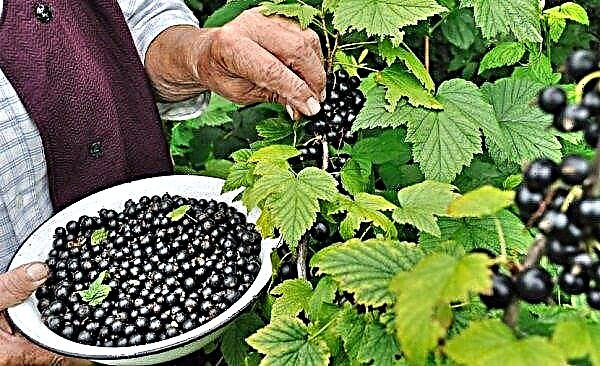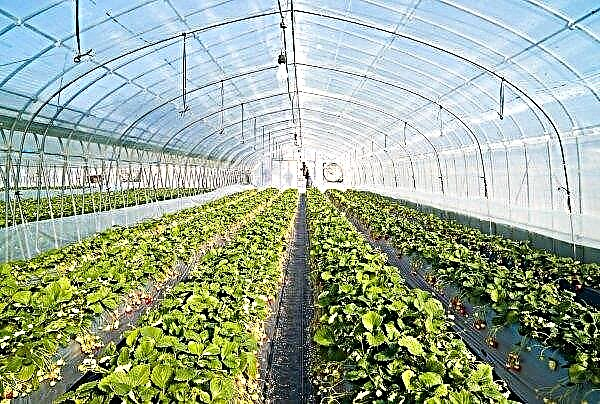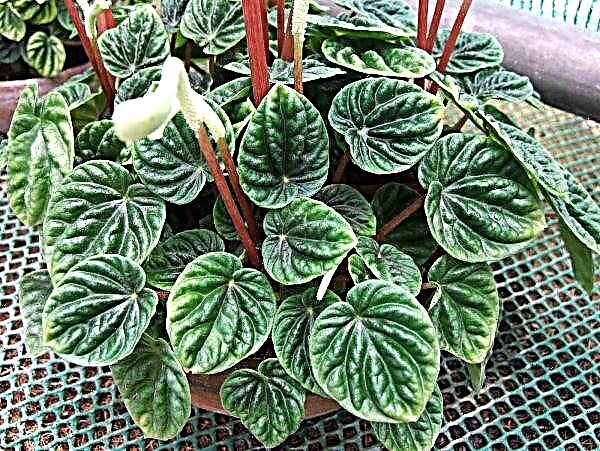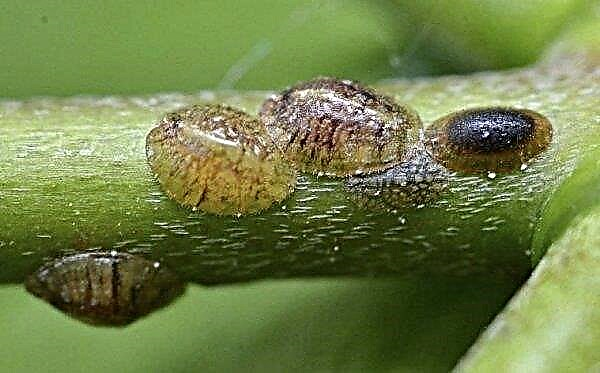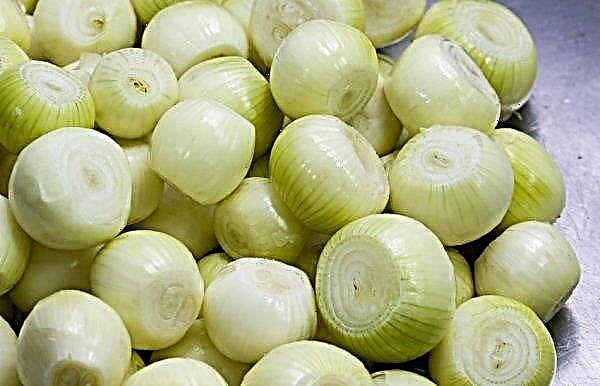Phalaenopsis is a plant from the Orchid genus, a representative of the tropical flora, due to its unique beauty and variety of colors, it has firmly gained popularity among domestic flower growers. The history of orchid cultivation at home in our latitudes began relatively recently, perhaps for this reason some problems when growing plants can puzzle gardeners. Consider why the leaves turn yellow at phalaenopsis, and what to do about it.
Features of care and growing phalaenopsis
Phelonopsis can not be called a capricious plant, but it must be borne in mind that its homeland is Southeast Asia and the northern regions of Australia. Accordingly, the flower needs certain conditions of detention, as close as possible to the natural conditions of these geographical regions.
Proper watering. Phelonopsis refers to epiphytes, which means that the flower develops on other plants, and this plant is not a donor, epiphytes get all the moisture and nutrients from the air through photosynthesis.
There are several ways to properly water an orchid:Important! Orchid suffers greatly from excessive soil moisture. To save a flower whose condition is undermined by severe waterlogging is much more difficult than to bring to a normal state a little dried up from a lack of moisture.
- Strait. The substrate is watered near the sides of the pot, water flows through the drainage holes of large diameter into the pan. The method is used mainly after planting a flower in a new place.
- Immersion. A flower pot is lowered into a basin with water for 20-30 minutes, during which time the water saturates the substrate well, from where it is pulled by the root system. The method is applied to healthy strong orchids that grow in a water-absorbing substrate.
- Watering in a closed container. Applied to flowers that are grown in containers without drainage holes. Water is poured into the pot to the level of the root neck. After half an hour, the liquid is drained. During this time, the substrate absorbs a sufficient amount of moisture for normal plant life.
Absolutely any plant needs watering, without exception. However, such a vital procedure can harm the orchid.

In order to prevent this from happening, when moistening the phalaenopsis, you need to follow a few simple rules:
- do not water orchid leaves, as this leads to wilting and loss of brightness of flowers;
- low temperature or high hardness water can cause yellowness on foliage, lead to root necrosis;
- when moistened by immersion for each flower, it is necessary to carry out an individual procedure with clean water, otherwise, with repeated use of water, a healthy plant can become infected from the patient.
Important! For irrigation of phalaenopsis, it is necessary to use settled water mixed with distilled in a ratio of 1: 1, with a temperature of +30 ... + 35 ° С.
Lighting. Another important factor that should be given special attention. Lighting is one of the prerequisites for the normal course of the photosynthesis process. Experts say that sufficient daylight hours stimulate the flowering of orchids, while a lack of light leads to an increase in green mass.
For normal development and flowering, the plant needs a sufficient amount of light, if not solar (which is quite problematic in our latitudes), then artificial. Moreover, it should be borne in mind that the flower in vivo grows mainly in the shade, which he needs to create at home.
It is best to place the plant on a windowsill located on the south or east side. A window facing north is the least acceptable option, although using phytolamps, you can create good conditions in this situation.
Important! On average, phalaenopsis should be in daylight for 12–15 hours daily. For varietal orchids, patients recovering from the disease, as well as young plants, the recommended daylight hours are 17–19 hours
Temperature. The significance of the temperature regime for normal photosynthesis is not less than the level of illumination. For orchids growing in the natural environment, the optimum temperature is considered to be in the range of +18 ... + 30 ° С. The same temperature regime is necessary for varietal species, which are unlikely to be able to grow normally at +18 ... + 20 ° С, in a room with artificial heating and a lack of lighting for 4–6 months (typical Russian winter). But hybrids perceive such conditions quite normally, they are well adapted to them.
It is best to provide the flower with an average daily temperature of +21 ... + 25 ° C and adequate lighting. If you create these conditions, the rest of the care will be expressed only in watering and fertilizing.
A regular temperature drop within 3-5 degrees stimulates the flowering process. However, when creating such conditions, it must be remembered that the temperature should not be allowed to decrease by more than 5 degrees. Otherwise, the likelihood of developing fungal diseases is high.
Air humidity. Orchids need high humidity (75–100%) during normal periods of the life cycle and moderate (50–65%) during periods of rest. Providing such humidity in the warm season is quite simple, much more problems with this indicator arise in the heating season, this is especially true for plants located on the windowsill, under which there are heating radiators.
It’s best to purchase an electric humidifier to solve the problem, but such expenses are not always acceptable for beginner growers. Water containers, though not so efficiently, will help. Most suitable for these purposes are containers of wide diameter that do not have a throat (bowls, shallow pans, plastic containers).Did you know? For the first time, at the end of the 17th century, phalaenopsis was discovered by the German traveler G. Rumph on the island of Ambon, which is part of the Moluccan archipelago. In 1752, a Swede P. Osbek on one of the islands of the same archipelago found another flower, which he sent to the founder of the modern plant classification, Karl Linnaeus, who described the Epidendrum amabile in his work “Plant Species”.
Top dressing. For normal growth, development and flowering of phalaenopsis, it must be regularly fed.

When applying fertilizers, some simple rules should be followed:
- fertilizers are applied only when the plant is absolutely healthy, it has strong roots and greenery;
- during the flowering period, it is undesirable to fertilize the phalaenopsis, since top dressing stimulates metabolic processes, respectively, the orchid will bloom faster;
- during active growth, fertilizers are applied every week, unless a specific schedule is indicated in the instructions for the product, and at rest it is enough to feed the phalaenopsis twice a month;
- transplanted orchids should not be fed for 1 month;
- observe the correct dosage and concentration of fertilizer solutions.
Why do phalaenopsis leaves dry and turn yellow and what should I do
The health status of any plant is influenced by a lot of factors, so the causes of wilting and yellowing of phalaenopsis leaves can be completely different. Although the vast majority of these causes, one way or another, relate to one or more of the following factors.
Violation of fertilizer and watering rules
Incorrect watering or top dressing are some of the most common causes of yellowness on leaves. It can occur due to lack of moisture, its excess, as well as due to improper watering.
It happens that novice growers flood the plant. As a result, the substrate absorbs a lot of moisture, which prevents the root system from breathing. This circumstance leads, in turn, to the formation of root rot. In addition, a too humid environment is a favorable factor for the development of fungal diseases.
Insufficiently experienced flower growers can draw conclusions about the need for irrigation on dry bark, located on the surface of the substrate. However, these pieces located on the surface dry quite quickly, while the inside of the substrate is still well moistened.
Signs of excessive phalaenopsis watering:
- almost all leaves turned yellow in the orchid, not only the lower ones;
- the surface of the leaves is constantly moistened, the foliage itself acquires a soft structure;
- foliage, less often - the trunk and root system are covered with dark spots;
- the buds acquire a rusty hue, after which they dry up and crumble;
- the plant scrolls freely in a pot, it can be pulled out without making absolutely no effort.
Important! Orchids are best planted in transparent pots, as this makes it possible to fairly accurately determine the moisture level of the substrate. «approximately».
If you are sure that the cause of the yellowness on the foliage is to fill the plant with water, remove the flower from the pot, remove the damaged (blackened, rotted) parts of the root and transplant into another substrate.
The main sign of insufficient watering is the yellowed lower leaves, while the flower looks quite healthy. Moisture deficiency may occur due to incorrectly selected watering method. Perhaps the water, which the flower was watered from the watering can, quickly leaves through the drainage holes, without having time to nourish the roots. As a result, young foliage, more in need of nutrients, takes them from mature leaves.
To eliminate the consequences of insufficient watering is quite simple: for this you need to moisten the plant by immersion. After 10-15 days of such watering, the orchid will recover.
Video: Causes of yellowing phalaenopsis and how to save the plant
Another reason for the yellowing associated with irrigation may be too high water hardness. Watering with a high salt content leads to salinization of the substrate. If the reason for yellowness is precisely this, the substrate should be replaced, and for irrigation use the treated tap water diluted with distilled in a ratio of 1: 1.
Excessive or insufficient feeding is also quite often the cause of the formation of yellow spots. Both extremes are dangerous.
In the event that the yellowness of the leaves is associated with improper fertilizer application, the following measures should be taken:
- In case of lack of fertilizers, you just need to feed the plant with special preparations for orchids ("BonaForte", "Cameleon", "Kemira Lux", etc.). Carefully read the instructions and start feeding the flower with half the specified dose.
- In the event that the appearance of yellowness was the result of excessive fertilizing, the flower should be transplanted into another substrate as soon as possible. If any circumstance interferes with the procedure immediately, it will be necessary to do this as soon as possible, and rinse the roots for 20 minutes with a weak stream of water from the tap.
Important! Hybrid phalaenopsis is much less demanding on light and temperature conditions, proper watering and air humidity than varietal. If you are just starting to deal with these colors, opt for a hybrid.
Inappropriate location
The leaves may turn yellow due to the inappropriate place where the flower pot is located. As mentioned above, the orchid prefers places with light shading and does not like the open sun. In principle, a flower can grow normally in the shade, under other suitable conditions (temperature, humidity, watering), only it will bloom not so intensively and for a long time.
If you find yellowed areas on the leaves and are sure that the cause of the problem lies in high-intensity lighting, remove the plant in a shaded place. You do not need to remove yellow areas from the leaves, with a normal level of light, yellowness will soon disappear.
Adversely affect the condition of the flower can be located nearby heating radiators. Additional heating generally creates humidification problems in the winter, and if the flower is on the windowsill above the battery, this may adversely affect the plant. In any case, the solution is one - to rearrange the flowerpot with the plant to another place.
Unsuitable container for growing
This is a fairly common reason why leaves may turn yellow. With growth and development, a flower needs a larger pot, as the former is already cramped for its root system. The problem is solved simply: it is enough to transplant the orchid into another container, of a larger size and diameter.
In this case, you should choose a pot, the diameter of the upper cut (neck) of which is no more than 2 cm greater than the diameter of the previous one. Otherwise, the soil may remain wet longer, and excess moisture, in turn, can cause root rot.
Possible diseases and pests
Yellowed leaves and other parts of the orchid may be the result of damage to the plant by diseases and pests:
- Fusarium Favorable conditions for the appearance of the fungus are excessive moisture and low temperature. Foliage turns yellow, curls up in a straw, and then becomes dark. Fusarium infection is contagious, so the affected flower should be isolated from healthy plants. The affected areas are removed, antiseptic treatment is carried out (alcohol, brilliant green), “Fundazol” is used for treatment according to the instructions (about 1 time in 5-7 days).

- Bacterial and fungal infections. Excessive watering or infected flowers may be the cause of the occurrence. You can find out that your flower is affected by a similar infection by the following signs: the yellow leaves begin to darken and become soft to the touch, the surface is covered with ulcers. Remove from the diseased plant the affected areas of greenery and the root system. Treat the cut sites with a solution of iodine or special antiseptics, after which the flower should be moved to another substrate.

- Root tick. The appearance of the pest can be found by the unhealthy state of the root system and shoots. The flower is transplanted into another substrate, pre-treating the plant with Agrovertin or Karbofos, as indicated in the instructions.

- Whitefly The fact that the parasite is chosen by your phalaenopsis will tell you a white coating on the reddened or yellowed leaves. Try to help the flower as follows: prepare a solution of laundry soap, treat it with a plant, and then use "Actellik".
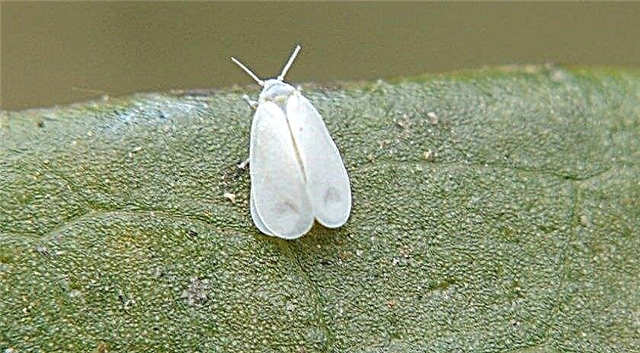
Why leaves turn yellow at phalaenopsis after transplantation
The process of transplanting to another container is a great stress for the plant. A weakening of the plant, a decrease in its immunity becomes a natural reaction to stress, so the painful condition of the flower after the procedure should not scare you, this is more likely a rule than an exception.
Did you know? Kinabalu Gold orchids are the most expensive flowers of their family on the planet. The plant is from Malaysia, it is quite rare and blooms for the first time only in the 15th year of life, so the cost of its shoots reaches up to 5 thousand US dollars apiece.
There can be several reasons for the yellowing of the leaves after transplantation: the stress itself, received upon moving, adaptation to a new place of residence, substitution of the substrate, micro-injuries received during transplantation (it is extremely rare even for experienced gardeners to avoid them).Your task is to create the plant as comfortable as possible so that it can safely survive stress and adapt to a new place of residence.
It is best to transplant an orchid in the spring, at a time when the flower is full of vitality and energy. You can not carry out the procedure during the flowering period - this can lead to a reset of flowers. Transplantation is allowed at this time only if the life of the flower is threatened.
In order for the transplant procedure to proceed most painlessly, the following rules must be observed:
- After the procedure, place the flower in a shaded room for 1-2 weeks. Select a place beforehand and do not change it within the specified time. The most suitable option is a window facing east.
- Observe the temperature regime (+21 ... + 23 ° C).
- The first time you need to water the plant 5 days after the transplant, again - after 2 weeks.
The comfortable conditions created by you will help the plant cope with stress faster and adapt. Usually this time is enough to tighten all the microdamages received during the transplant.
Did you know? At the turn of the 20th and 21st centuries The annual revenue of wholesale orchid wholesalers was about $ 100 million, with 3/4 of this amount accounted for Phalaenopsis.
Preventative measures
In order to minimize the risk of yellowness on the leaves of your phalaenopsis (as, incidentally, other diseases), it is necessary to observe some preventive measures:
- Water the plant correctly. For a healthy flower, the most acceptable immersion method. Use “correct” water to moisturize. Try not to overmoisten the flower, because the plant tolerates a moisture deficit more easily than its excess.
- Do not water the leaves of the flower, do not use cold water. When moisturizing, do not immerse different plants in one container, this can lead to mass diseases.
- Try to maintain the necessary humidity, use any improvised means to moisturize. With high air dryness, it is sometimes possible to spray a plant from a spray bottle using the finest spray gun.
- Fertilize the plant only if it is completely healthy. During flowering, feeding is not recommended. When applying fertilizers, observe the dosage. Feed according to the schedule. Orchids need timely fertilizing not only for beautiful flowering, but also to create conditions close to the natural environment.
- You can not transplant during flowering, and after flowering you need to prune the flower stalk. This is done with a clean, sanitized tool, and then the trimmed place is treated. After transplanting, do not forget to immediately water Phalaenonopsis abundantly.
- Keep young plants away from those that have been with you for a long time.

Useful Care Tips
A few helpful phelonopsis care tips will help you Avoid the typical mistakes typical for beginner growers:
- do not water the orchid in the evening, this can cause hypothermia of the roots and lead to the development of the fungus;
- Do not use unstated tap water for irrigation, as this leads to salinization of the root system, after which it will not be able to properly absorb moisture;
- do not place newly acquired flowers near old-timers, this can lead to infection of all plants;
- follow the basic characteristics of the microclimate and observe them (light, watering, temperature and humidity, fertilizer application).
Having the necessary theoretical knowledge, to create optimal conditions for the normal growth and development of orchids is quite simple, although it will take a little work. But, as compensation for the efforts spent, you can grow a beautiful, healthy flower that will delight you and your loved ones for a long time.






